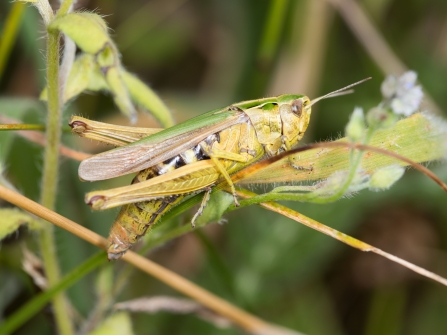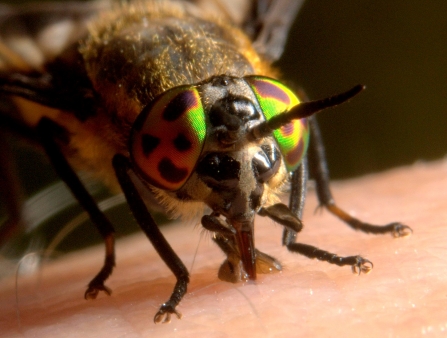Direct effects of high temperatures
All other things being equal, the young stages of insects grow faster at higher temperatures. Faster growth, less time spent in their most vulnerable stages, can mean higher numbers of adults. So, this year some grasshopper species became adult 3-4 weeks earlier than usual, and seem to be more abundant than for many years. It’s also been the best summer I’ve seen for some of our butterflies, such as marbled white which is on the wing right now, in huge numbers. The huge and gorgeous purple emperor is also being seen in record numbers and turning up at new sites.
It’s also the season for flying ants - and hot dry weather will suit them very well, so they could also be around in record numbers. They’re harmless but can be mildly irritating if you walk through the clouds of them.
In some species, high temperatures, especially when combined with crowded conditions (which can result from the reduced losses as they grow faster), can lead to longer-winged and more mobile adults. The hot summers of 1989 and 1990 triggered some bush-cricket species to expand their range, from the south coast right into the midlands, and we may also see new species colonising from mainland Europe. Most of these, like the tree bumblebee which arrived in 2000 and is now well established as far north as central Scotland, will probably fit it fine, with no impact on existing species.
If foodplant loss is bad news for many insect larvae, many adult insects tend to live longer in dry and warm weather providing they can find food (for many, nectar; for dragonflies, other insects).
The news stories about horseflies may be due to them moving further from their wetland breeding sites, rather than actual increases in numbers. Unusual reports of horseflies in gardens back this up.
I recently spent a weekend in the New Forest, walking in boggy and heathy habitats, and didn’t see any more horseflies or mosquitoes than usual. I would definitely NOT suggest anyone should drain their garden pond because of the weather - they are vital for all sorts of wildlife, not least birds and hedgehogs having a drink - and most of the troublesome insects may be breeding in small pockets of water rather than in a healthy pond (which has lots of predators such as dragonfly larvae that keep mosquitoes in check).
The one invertebrate I would warn people to look out for are ticks: these seem to be more plentiful in some places this year, and a proportion of them carry the infection, Lyme Disease. If you walk in long grass or heather, check yourself carefully for ticks when you get home, and remove them with tweezers or a plastic tick-remover. If you’re bitten, watch out for a reddish ring developing round the bite, and if you get any flu-like symptoms, mention to your GP that you think you may have been bitten, and ask to be checked if Lyme Disease is a possibility. It’s cleared up by antibiotics if treated early.



